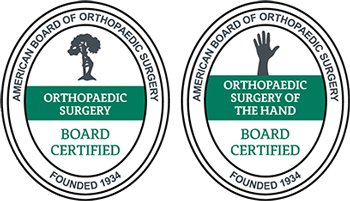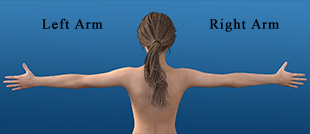Common Hand Injuries in Gamers
The term “gamer” can encompass a broad range of enthusiasts who engage in a variety of interactive games, but it typically relates to those who regularly play computer or console-based video games. Though game environments and individual game titles can vary in countless ways, they do have certain qualities in common. They encourage long-form play and require frequent repetitive movements involving the wrist, hands, and fingers. Consequently, it’s not uncommon for gamers to sustain injuries to these areas of their bodies.
Let’s look at some of the orthopedic problems that gamers may experience, the symptoms to watch out for, and the treatment options that are currently available.
Contents
De Quervain’s Tenosynovitis
De Quervain’s tenosynovitis goes by various alternative names, including but not limited to De Quervain’s syndrome, mommy thumb, and gamer’s thumb. This condition refers to inflammation of the tendons that control the movement of the thumb — specifically the abductor pollicis longus and the extensor pollicis brevis. It’s a type of overuse injury, meaning that it arises from repetitive use that has caused tissue damage to the affected area.

Controller Gaming by Anton Porsche is licensed with CC0 1.0
In console gaming, the thumbs are the primary means of controlling inputs, so this segment of gamers is particularly prone to developing de Quervain’s. Mobile gamers are susceptible, too, as are individuals who frequently write text messages, since such activities often require similar repetitive motions.
Symptoms of de Quervain’s Tenosynovitis
You may have de Quervain’s tenosynovitis if you exhibit the following symptoms:
- Pain over the radial aspect of the wrist, with either gradual or sudden onset.
- Pain in the thumb during or after gaming.
- Pain that radiates up the forearm.
- Pain that worsens with any use or movement of the thumb or hand.
- Swelling over the radial aspect of the wrist or base of the thumb.
- A catching, popping, or snapping sensation with movement of the thumb.
Treatment for de Quervain’s Tenosynovitis
The treatment options for de Quervain’s tenosynovitis are largely conservative. Initially, your physician may recommend anti-inflammatories and activity modification, namely avoidance of the repetitive activity responsible for the injury. Another common first step in treatment is a splint, which can restrict wrist and thumb range of motion to prevent exacerbating movements. If the symptoms are severe or fail to improve, one or two rounds of corticosteroid injections into the tendon sheath can help to improve symptoms.
Should your symptoms persist even after injections, you may be a candidate for de Quervain’s release. During the operation, the surgeon makes a small incision to release the tendon sheath, relieving the pressure on the inflamed tendons. Successful surgery resolves your symptoms without affecting hand and wrist functionality.
Carpal Tunnel Syndrome
Carpal tunnel syndrome results from compression of the median nerve, which provides sensation to the radial aspect of the palm, plus the thumb, index finger, long finger, and the radial half of the ring finger. This compression occurs at the carpal tunnel, located at the base of the palm and surrounded by the carpal bones and transverse carpal ligament.
Carpal tunnel syndrome can have a variety of causes. In computer gamers, the most common mechanisms of nerve compression are prolonged hyperextension of the wrist and trauma to the wrist. In some instances, gaming-related carpal tunnel syndrome may result from health problems such as high blood pressure or diabetes facilitated by a primarily sedentary lifestyle.
Symptoms of Carpal Tunnel Syndrome
The characteristic symptoms of carpal tunnel syndrome are:
- Numbness, tingling, and pain in the median nerve distribution.
- Pain and a burning sensation that radiates up the arm.
- Hand weakness.
- Nighttime wrist pain.
Treatment for Carpal Tunnel Syndrome
Unless a physical exam reveals advanced progression of the condition, your physician is likely to initiate conservative treatment with splinting, anti-inflammatories, and activity modification to avoid positions that may exacerbate your symptoms. Additional treatment options include one or multiple rounds of corticosteroid injections to relieve inflammation and, thus, compression.
If your condition doesn’t improve, your physician may recommend carpal tunnel release to prevent worsening of symptoms and permanent nerve damage. Similar to de Quervain’s surgery, this operation involves cutting through an area to reduce the compression on the median nerve.
Fractures and Strains
Fractures and strains are risks among gamers who use systems that promote physical activity, such as the Nintendo Wii and virtual reality headsets. Many such injuries are traumatic, resulting from impacts associated with falls or forceful movement of the upper extremities. Other injuries are due to the strain associated with the physical act of repeatedly swinging a controller. Though these injuries may be less common than de Quervain’s and carpal tunnel syndrome, they occur frequently enough that medical practitioners have taken notice and gamers should take precautions when playing.
Symptoms of Fractures and Strains
The most common symptoms of a fracture or strain at the wrist, hand, or finger are:
- Severe pain exacerbated by movement or grip.
- Tenderness to palpation.
- Swelling.
- Bruising.
- Visible deformity.
- Weakness.
- Loss of range of motion.
Treatment for Fractures and Strains
Conservative treatment measures for minor or nondisplaced fractures include immobilization and pain relievers such as anti-inflammatories or prescription drugs. After immobilization, the physician may recommend occupational therapy to recondition the wrist, hand, or finger. Surgical repair is indicated if the fracture is open, extremely displaced, or severe enough that it affects the surrounding soft tissues, nerves, or joints.
For muscle strains, the typical treatment plan is entirely conservative. Anti-inflammatories and icing are standard practices. As the swelling and pain decrease, the physician may recommend the application of heat. They may also provide an occupational therapy referral to teach you stretches and exercises that may facilitate healing.
Preventive Measures Against Common Gaming Injuries
The best treatment for any type of injury is prevention. Consider these tips to preempt the onset of symptoms:
- Address potential underlying health conditions such as diabetes, hypertension, and obesity, which can contribute to conditions such as carpal tunnel syndrome.
- Be mindful of hand and wrist positioning to prevent repetitive stress on susceptible areas.
- Try to use a more relaxed grip on your controller as you play.
- Reduce your playing time or take frequent breaks to reduce the overall strain on your body and allow it chances to recover.
- Perform hand and wrist stretches before and after playing.
- Consider using ergonomic peripherals and other components, such as a cushioned mouse pad.
Gaming can be a great form of recreation. Just make sure to enact appropriate measures to prevent injuries to your wrists, hands, and fingers. Should you experience any symptoms, contact us as soon as you can to set up an appointment. Learn more about common hand and wrist conditions, as well as treatment options available at the Hand and Wrist Institute here. To learn more about common hand and wrist conditions, visit our blog to read about causes, symptoms, and treatment options available here at the Hand and Wrist Institute.

























